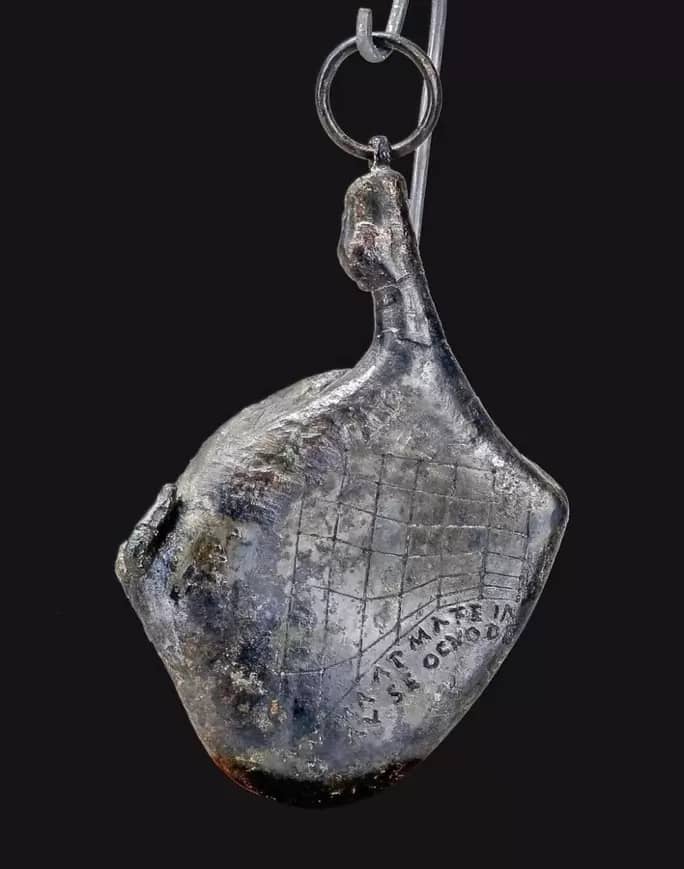Thanks to historian and writer Gareth Harney, for bringing to my notice this piece of (expensive) Roman whimsy. The bronze item was found whilst excavating in the ruins of the (buried by the eruption of Vesuvius) Villa dei Papiri, a large, luxurious, country house in the Roman town of Herculaneum — in what is now Ercolano, southern Italy — in 1760.
What subsequently turned out to be a precision-crafted timepiece — one cast in the shape of a cured ham (although some spoilsport ‘expert’ tried to argue that it was modelled on a water jug FFS) — was identified as a rare pocket sundial, mainly by reference to its grid markings. The vertical lines are there to represent the months of the year, whilst the horizontal ones indicate the number of hours past sunrise or before sunset. The exact workings of the ‘pork clock’ weren’t known until quite recently, when, thanks to new research undertaken by historians at Wesleyan University who’d built a 3D-printed replica of the sundial — complete with its lost gnomon — which was earlier described as
“having been in the shape of a pig’s tail” by an (unnamed) 18th-century museum curator
who then went on to run a series of experiments out in the sunshine to confirm their hypothesis that this device would simply need to be hung from a chain, taking care to align the sun on its left side, allowing the pig tail to cast its shadow across the grid. The ancient Roman user would have aligned the tip of the tail’s shadow to fall on the vertical column of the current month and they would then count the number of horizontal lines from the top of the grid down to the that point, thus revealing the hour of the day. Fixed sundials were common everywhere across the Roman world but this (as Harney eloquently phrases it) “prosciutto clock” is one of only around 25 portable versions to survive until the present and is also one of the earliest known to exist.
The first ‘photo shows the model of the “pork clock” sundial, in this one, indicating the time is showing as 9 a.m.

Whilst the second picture below shows the pitted and pock-marked, but still lovely, original.

So why the shape of a prosciutto, the Italian version of a leg of ham? Well why not a ham, after all. The pig is a symbol in Epicurean philosophy, which emphasised “living for the day”. And according to National Geographic, most of the texts found at the Villa dei Papiri are related to Epicurean philosophy.
“There was a lot of humour among the Epicureans,” so perhaps the shape is a macabre joke: “Enjoy your life while you’ve got it, because you’re going to end up like a ham.”
I think it’s a real delight. I wonder if we could possibly make one in ceramic…